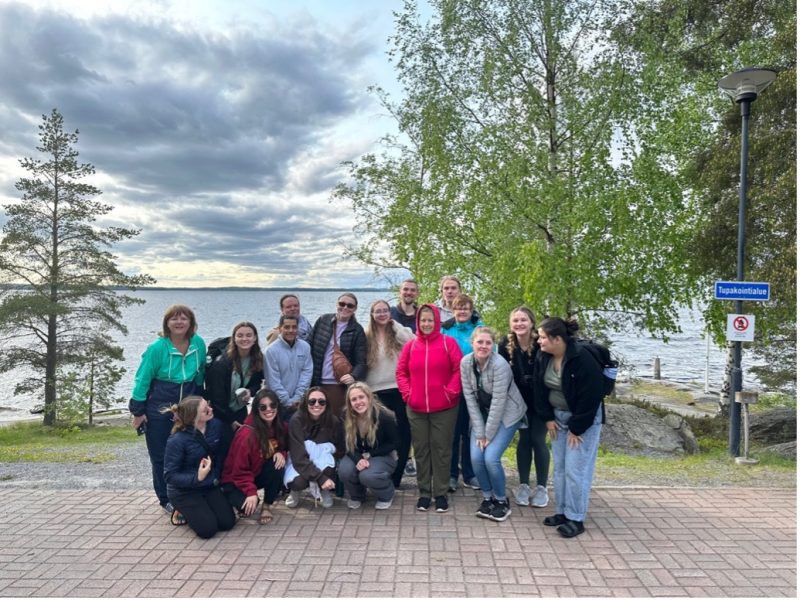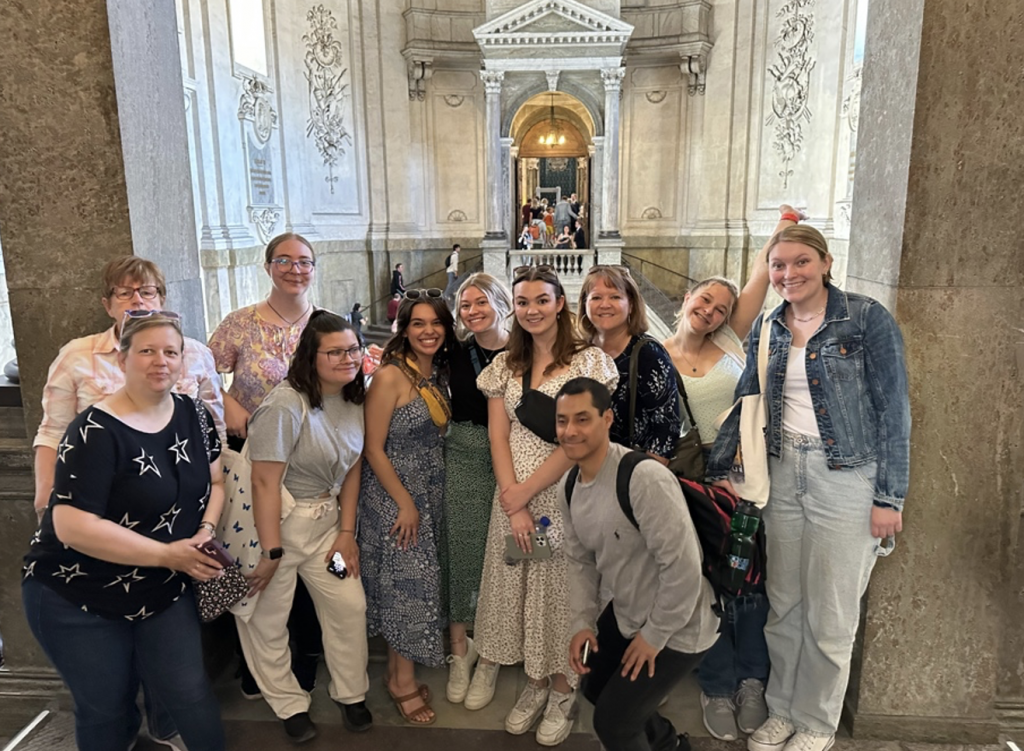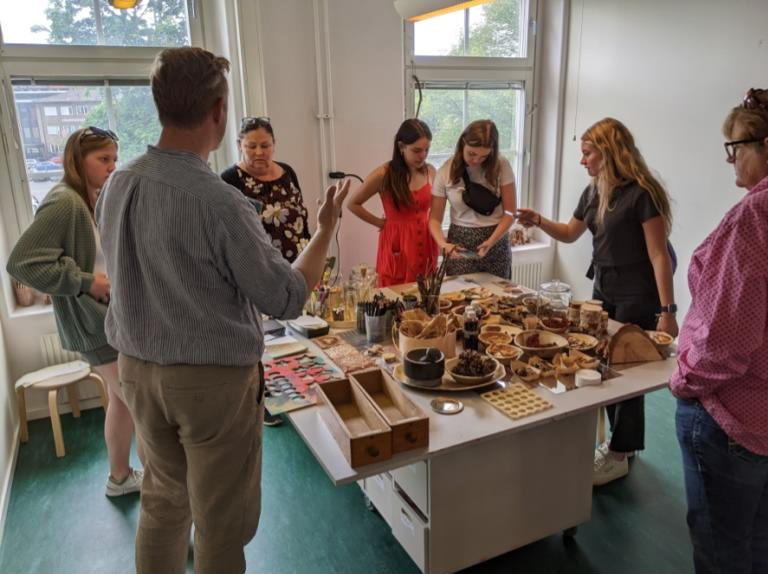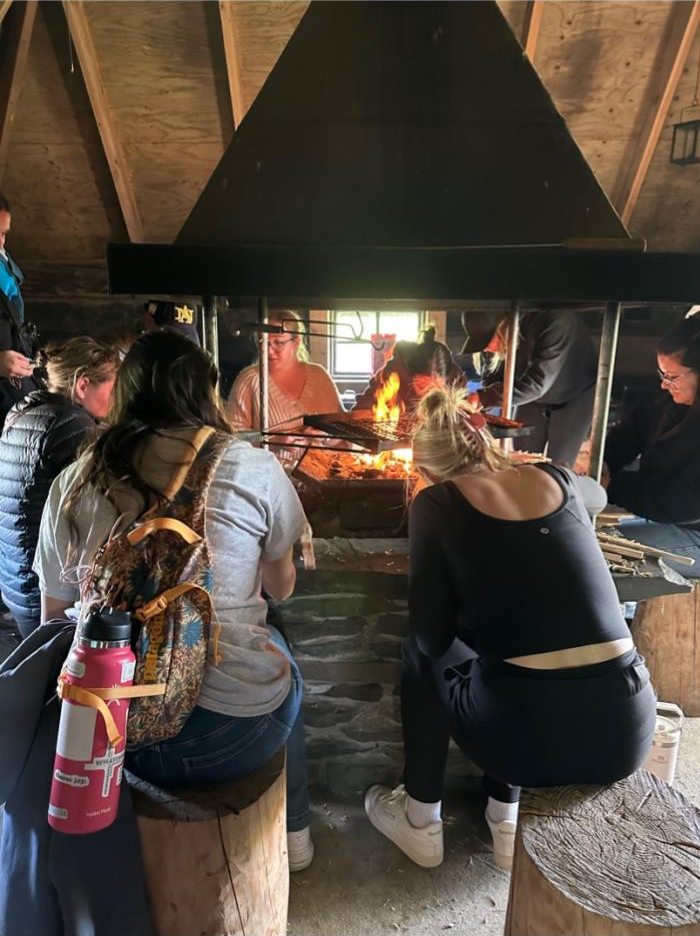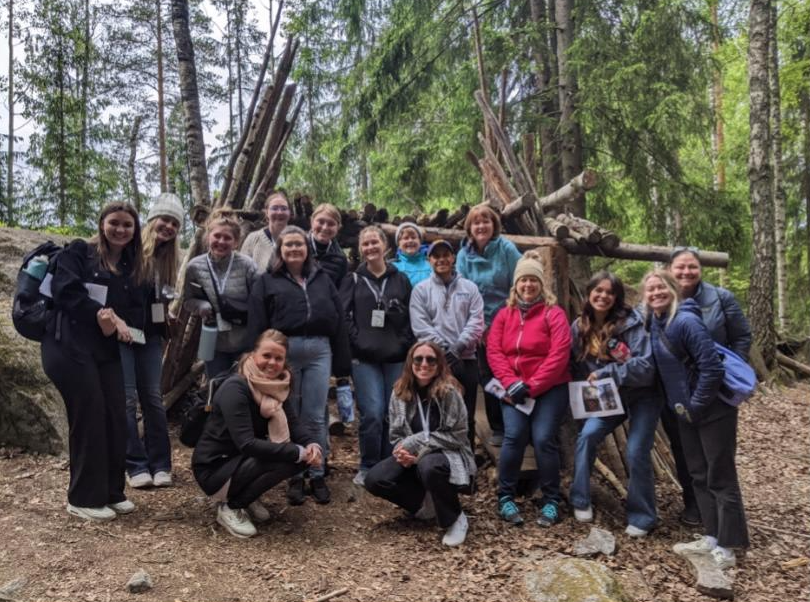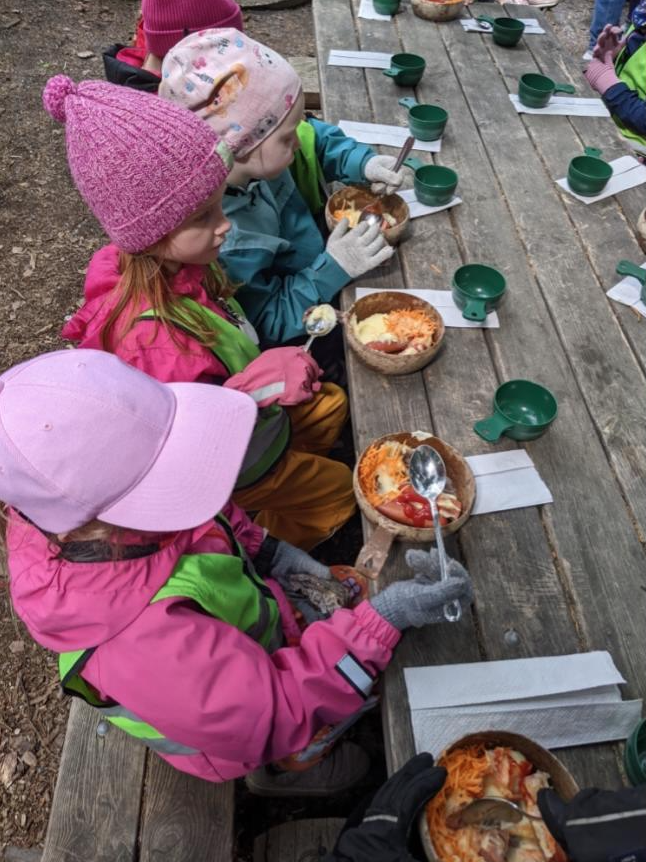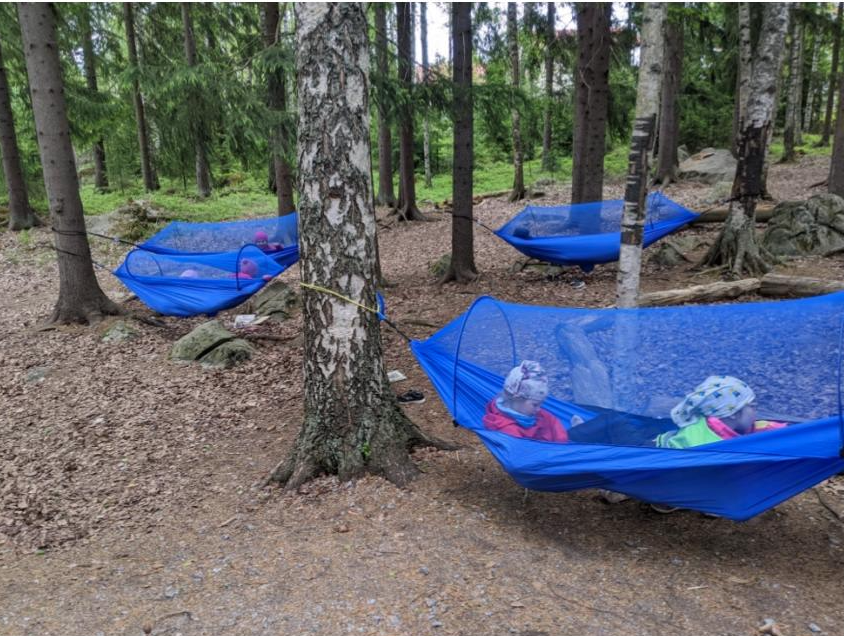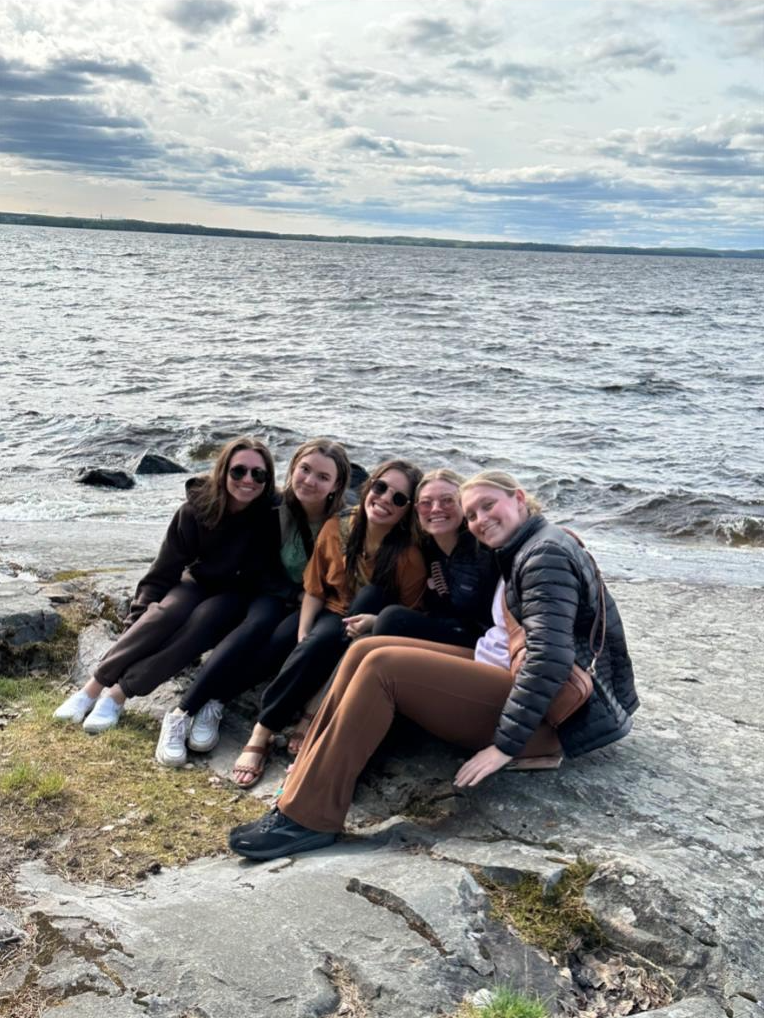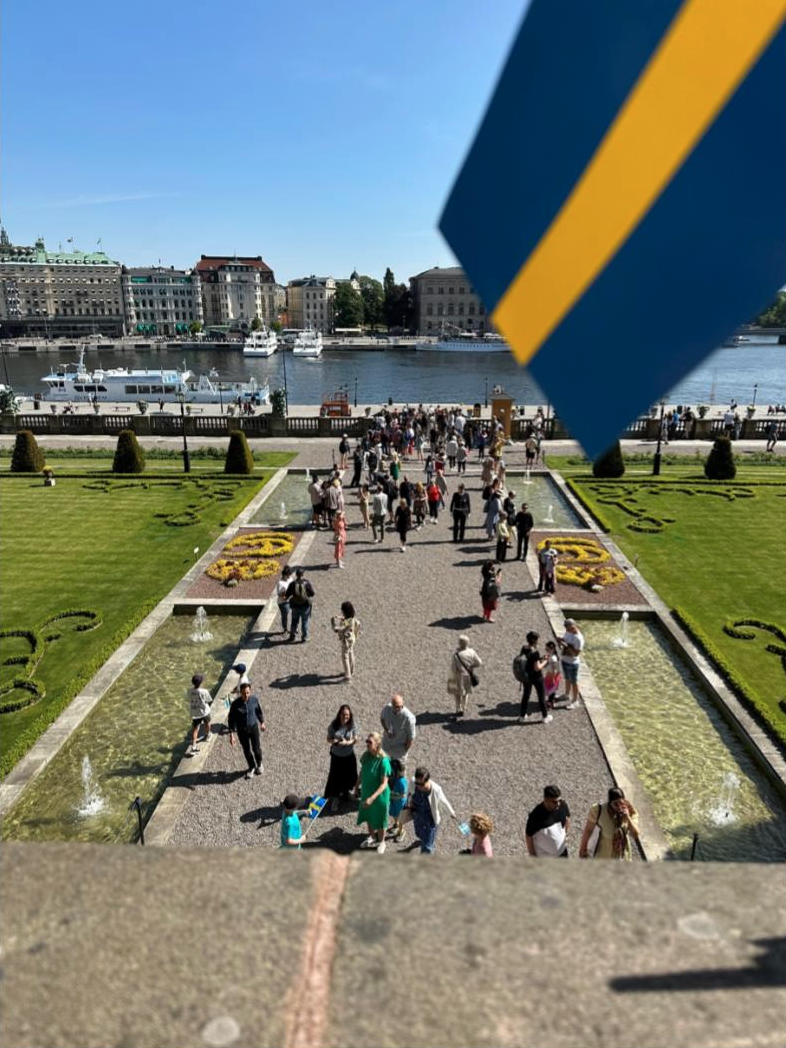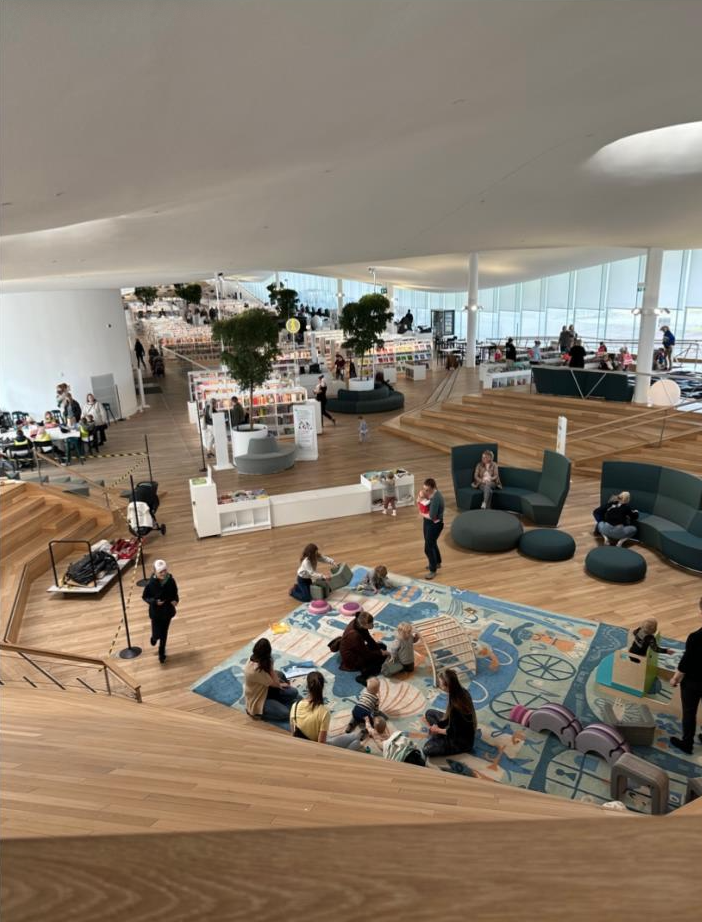Comparing Scandinavian and US Early Childhood Pedagogy
Last summer Sarah Kondratuk and Tori Damjanovic traveled with 12 students to Finland and Sweden for a total of 10 days. The students in attendance included 10 undergraduate students, one master’s student, and one PhD student. The goal of this trip was to provide students an opportunity to view pedagogy and practice in these countries and compare them to their US field experiences. Prior to our trip, we had selected readings for the students to gain some basic understanding of Scandinavian school contexts and practices. As part of our pre-departure meetings, we asked the group what they wanted to learn about while they were abroad related to early childhood. The students came up with a list of possible ideas. The faculty and doctorate student took their ideas and condensed them into four primary categories of study: curriculum, agency, sustainability, and pedagogy. The students were then assigned to a group based on their area of interest. The two faculty members, a doctorate student, and a master’s student facilitated a group guided by a research question for each topic. During the trip, each group collected data and artifacts on each of these topics. Every evening the facilitator would meet with their group to unpack what they saw during the day pertaining to their topic.
The first stop was Tampere Finland, where the students visited three different schools. A guide took us through the schools and explained their practices and ideas around schooling. The first two schools were traditional Finnish preschools, while the third school was an outdoor forest school where children attended rain, snow, or shine. Forest schools are very popular throughout Finland and are a growing trend around the world. Following each field visit, a lecturer shared specific features of Finnish practices that included the system of schooling in Finland, special education in Finland, national curriculum, and pedagogical practices.
In the evenings, the students had fun cultural experiences to learn more about life in Finland. The students had the opportunity to cook Salmon soup in a Finnish outdoor barbeque space where they learned about the importance of nature to the people. They participated in a sauna experience, which is central to Finish life. The students and faculty sat in a boiling hot sauna (usually around 180 degrees) with the locals then ran out and jumped into the freezing cold lake to cool down. This is repeated multiple times and is thought to be very good for one’s health. This experience was topped off with more outdoor cooking of sausages and other traditional fare.
The group then headed down to Helsinki to learn more about early childhood education. The students had the opportunity to meet with a faculty member of Helsinki University who toured us through the town showing us how children are centered and valued in the country. We visited the Helsinki Central Library and were in awe of all the opportunities that were available to children and the community. We also viewed multiple playgrounds and a children’s museum that were accessible to everyone in the city. The students then attended a talk about racism in education from a scholar at the university. Following each of these days, the students met with their group facilitator to talk about what they witnessed pertaining to curriculum, agency, sustainability, and pedagogy.
A cruise ship took our group over to Stockholm Sweden for our final days. We happened to arrive just in time for their national holiday, where we had the opportunity to see members of the Swedish monarchy and tour the castle. We toured the city and festivals that were taking place to celebrate the holiday. We toured multiple museums including the Nobel Prize, Vasa, and Abba museums.
Following our two days of fun, we were back to work exploring Sweden’s early childhood practices. Early the next morning we headed to the city center to learn more about the arts in early childhood at a studio within the public library. Here, the students explored the arts and learned about how all children have access to these spaces to learn and create. In the afternoon two experts came to share about a Remida, a shared space where everyone has access to upcycle, recycle, and infuse art into early childhood and beyond. They spoke about how sustainability is central to Swedish life and how local businesses donate their material waste to help reduce the amount of garbage they are producing in the surrounding areas. In the evening we walked to dinner with University of Stockholm faculty who shared more about what early childhood teacher preparation looks like in Sweden.
Our final day was spent touring schools in Stockholm. Each student was paired with a lead teacher and taken to different schools in the area. All the schools in this area are Reggio-inspired and inclusive for children of all abilities. The students were able to see what a morning looks like in a classroom and then tour the whole school to gain a better understanding of their pedagogy, curriculum, and practices. Following our classroom visits we lunched with faculty of the university in a maker space that has been created for the community. This space provides professional development on infusing art and technology into classrooms from preschool through 12th grade through a sustainability lens. After learning about the role of the space, we were able to tour and play around with the materials in the space. Following all these experiences, it was time to debrief and share what we learned.
On the final evenings of our trip, the students presented their findings of what they learned about curriculum, agency, sustainability, and pedagogy. Each group spent about an hour talking about what they had learned and shared examples of their findings, with time allotted at the end for others to ask questions or comment on their understanding. This was a wonderful culminating event to explore and share everything we learned during our trip. On the final day, we surprised the group with tickets to Grona Lund, a large amusement park in the middle of Stockholm. There the students rode some crazy roller coasters and saw Jack Johnson performing in the park.
The students learned a great deal about each of these topics and did a fantastic job of presenting their work. Some of the student groups plan on presenting at the undergraduate research conference or Educate to Act this spring sharing the differences they discovered in curriculum, agency, sustainability, and pedagogy in US and Scandinavian contexts. In addition to the coursework the undergraduate students engaged in, there is a broader research project taking place with a group of doctorate students. Prior to the trip, an IRB was put in place to explore preservice teachers’ perceptions and experiences of deconstructing and disrupting their ideas of schooling through a study abroad. The research questions they are exploring include:
· What are preservice teachers’ perspectives of Scandinavian early childhood pedagogies?
· What are preservice teachers’ perspectives of US early childhood pedagogies?
· What are preservice teachers’ experiences comparing Scandinavian and US early childhood pedagogies?
Susan Norton, a third-year doctorate student, is leading the study along with Bobby Macias, and Mancy Gao. Tori Damjanovic is serving as their mentor faculty member. Susan Norton received a graduate research award for her proposal of this work, and the group has submitted a proposal to present their work at AERA. The doctorate students are in the process of completing final interviews and analyzing their data. They will be sharing their work in multiple venues at NAU in the spring.
This study abroad was a life-changing experience for both the students and faculty. They learned about Swedish and Finnish culture while exploring early childhood education in these countries. The mix of cultural tours, school visits, and lectures gave them a deeper understanding of each country. The breakout groups provided a space for students to dive deeper into their topic of interest and explore the differences between the US and Sweden/Finland related to each topic. In addition, this study abroad has provided an opportunity for three doctorate students to engage in the research and dissemination process of their work. Sarah and Tori are reflecting on their trip and planning for their next study abroad which will take place in the summer of 2025.
